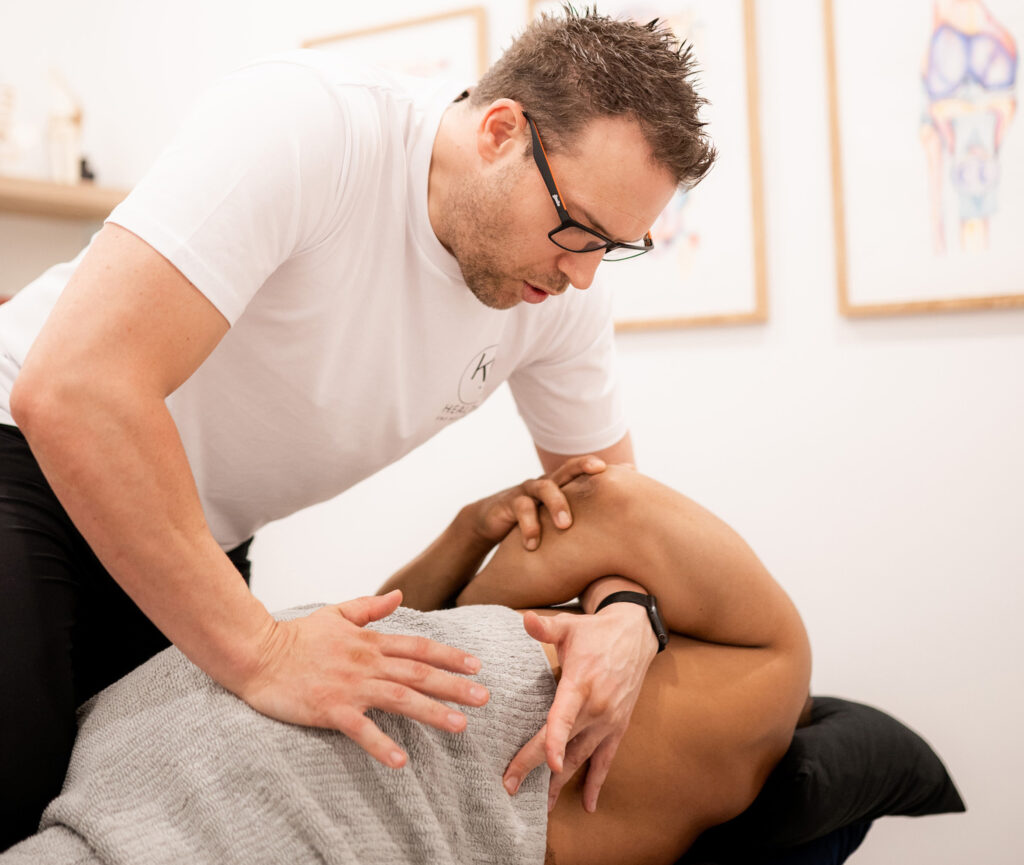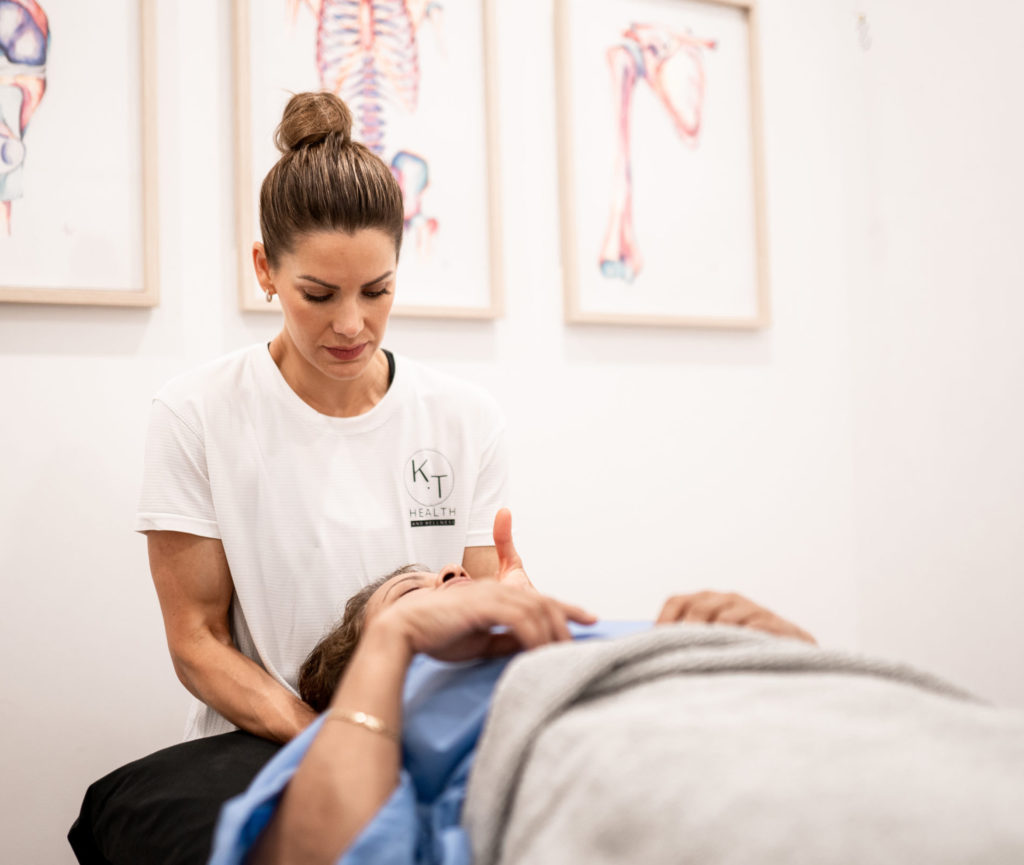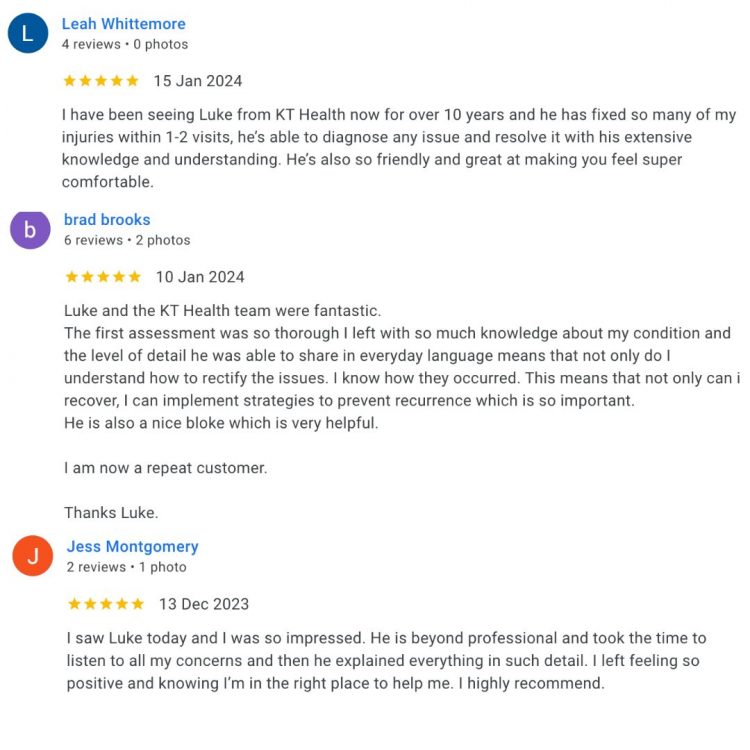Everything You Need to Know About Thoracic Postural Syndrome
What is Thoracic Postural Syndrome?
Thoracic postural syndrome is a common condition caused by poor posture, especially when sitting or standing with a rounded upper back and forward head position. Over time, this position puts strain on the joints, muscles, and ligaments in the thoracic spine (the upper and mid-back), leading to ache, stiffness, and fatigue.
An analogy…
Think of your upper back like a coat hanger. If it’s holding weight evenly, everything stays balanced. But if it’s bent forward all the time, it starts to sag and strain. That’s what happens when we slouch, the muscles and joints get overworked and tired, and pain sets in.
What are other names that thoracic postural syndrome can be referred to?
Postural Dysfunction
What causes thoracic postural syndrome?
The condition is caused by sustained forward head posture, which puts extra stress on the upper cervical spine, lower neck joints, and surrounding muscles. This position often results in overworked neck and upper back muscles, tightness in the chest and front of the neck, and weakness in the deep neck flexors and upper back muscles. It can also cause joint stiffness in the mid and upper spine. Over time, these imbalances create discomfort, reduced movement, and a higher risk of ongoing neck pain.
What are the signs and symptoms of thoracic postural syndrome?
- Dull, aching pain in the mid to upper back
- Feeling of tightness or stiffness across the shoulders
- Tired or burning sensation in the upper back after sitting
- Forward head posture and rounded shoulders
- Relief with movement or stretching
- Pain may feel worse at the end of the day or after long periods sitting
What tests are used to diagnose thoracic postural syndrome?
Postural assessment: The practitioner looks at how your spine, head, and shoulders are aligned.
Range of motion testing: To check for stiffness or discomfort when moving the thoracic spine.
Palpation: Feeling the muscles and joints to identify tension or joint restriction.
How long does thoracic postural syndrome take to heal?
With the right treatment and consistent posture correction, symptoms can begin improving in just a few days to a few weeks. Full recovery may take longer if the problem has developed over months or years. Ongoing strength and mobility work is key to long-term results.
How does thoracic postural syndrome happen?
- Long hours sitting or slouching
- Poor ergonomic setup (e.g. low laptop screen)
- Weak core and upper back muscles
- Lack of regular movement or exercise
- Stress or fatigue
- Repetitive forward-bending movements
What treatment can help thoracic postural syndrome?
- Hands-on therapy to release tight muscles and mobilise stiff joints
- Postural education and ergonomic advice
- Stretching for the chest and shoulders
- Strengthening exercises for the upper back
- Clinical Pilates or core stability training
What exercises or stretches can I do for thoracic postural syndrome?
- Wall Angels
- Thoracic Extensions
- Pec Stretches
- Shoulder Blade Squeezes
- Foam Roller Stretching
- Chin Tucks
What products can help with thoracic postural syndrome?
STOP GUESSING – START MOVING
See what other people have said about our osteopaths
Trustindex verifies that the original source of the review is Google. KT health has really helped my back and i have been able to get back into competitive sportTrustindex verifies that the original source of the review is Google. Absolutely amazing, I see Louie Nouh who always listens and caters to my needs. He is amazing at his job and always helps alleviate my pain. I highly recommend Louie.Trustindex verifies that the original source of the review is Google. Friendly, supportive staff. Such a lovely place to exercise! Highly recommend.Trustindex verifies that the original source of the review is Google. Amazing instructor, I am new to Pilates felt very comfortable & supported.Trustindex verifies that the original source of the review is Google. I have been suffering from shoulder and neck pain for months - I saw Dr Louie Nouh a couple of time. His treatment really relived the pain. I have full range of movement now. His knowledge on exercise is fantastic.Trustindex verifies that the original source of the review is Google. Absolutely love reformer at menai. Instructors are amazing. Love Michaela and love the small classes. Highly recommend!Trustindex verifies that the original source of the review is Google. The trainers are all amazing , they explain everthing step by step and help where needed . It is an amazing place to relax get to know other people have a laugh . I recommend for anyone .Trustindex verifies that the original source of the review is Google. Ever since I came here I’ve been looked after by Louie and my shoulder is already feeling much better. Highly Recommend these are good people.Trustindex verifies that the original source of the review is Google. SENSATIONAL Chiropractor in Menai! I attended my first appointment with Dr Louis Nouh at KT Health & Wellness who is an absolute genius even after one session with him. He explained everything he intended to address about my lower back condition, all in easy to understand, layman’s terms. He said he would call me the next day to follow and see how I was feeling after our session and guess what, he did! During our session, he made me feel relaxed and comfortable especially as it was my first chiropractic appointment EVER! For some reason, I am actually looking forward to my subsequent sessions with him next week. Don’t get me wrong, he did poke, prod and crack me as necessary but the results made it seem worth it.Trustindex verifies that the original source of the review is Google. I have been seeing Melinda now for a couple of months to help with bursitis in my hip. She is one of the best practitioners I’ve ever seen.. With the use of various tools and techniques she has helped me recover much quicker than I expected. Thanks Mel and see you tomorrow!
We don't offer magic fixes or cures, but a sustainable approach to back pain.
Our Osteopaths will offer you a road map to help you take control of your back pain and feel great again.
BOOK YOUR OSTEOPATH VISIT TODAY
Book a Time with Dr Luke Madden Below
Book a Time with Dr Melinda Madden Below
Already have an account?
Book as a guest
- Book an Appointment






